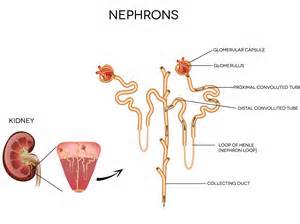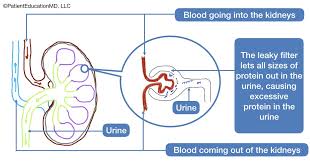Most often when you see a doctor, he or she will press your leg with one of his fingers, look at the indent made that quickly pops back to normal, and murmur, “Hmmm.” That’s what my rheumatologist did last time I saw her, only she didn’t say, “Hmmm.” She said, “Look at that, Gail.” Uh-oh.

I looked… and saw the indent still there. I know what that meant: edema. My favorite dictionary since high school almost 50 years ago, Merriam-Webster, defines edema for us:
“an abnormal infiltration and excess accumulation of serous fluid in connective tissue or in a serous cavity
called also dropsy”
So that’s what dropsy is. I’d always wondered.
Back to the matter at hand. What does edema have to do with chronic kidney disease – if anything.
Comprehensive Vascular Care, a practice in Michigan, offered some facts new to me:
“It’s also linked to two other major diseases: 1 in 3 adults with diabetes and 1 in 5 adults with high blood pressure may also have kidney disease. All three conditions can lead to edema (swelling) in the legs.”
I realized when I read this that my endocrinologist, primary care doctor, and nephrologist also always checked for edema. How did I not know the connection between their specialties and edema? After having written the blog for over a decade, it occurs to me that you may not know, either. Let’s find out together.
We know the simple test of pressing a finger into your leg to determine if edema is present. MediceNet tells us there are other tests which may be used to figure out if you have edema:
“X-ray
Electrocardiogram (EKG)
Blood tests
Urinalysis (urine test)”
Let’s say it is found that you have edema. Sure, it may be associated with your ckd, high blood pressure, or/and diabetes, but how?

“You probably know your kidneys help eliminate fluids from your body through urination. But, kidneys also filter fluids, removing excess waste products from your blood. If your kidneys don’t work properly, fluid can get trapped in your body. Some waste products, such as sodium, can cause fluid to get trapped in your soft tissues and cause swelling under your skin.
Kidney disease can cause swelling — or edema — anywhere in the body, but it’s most common in the feet, andkles [sic], and lower legs — all areas affected most by gravity. Some people also have swelling in their hands or face.
If there’s a lot of swelling, you might notice that when you press the swollen skin with your finger, the area stays dimpled or ‘pitted’ even after you remove your finger. This is sometimes called pitting edema, and it’s typically associated with more severe edema.
If your tissues continue to swell, this will put more pressure on your skin, and your skin may look shiny or taut in the affected areas. Your skin may also be more prone to cuts and sores because it’s stretched out. Some people develop skin ulcers, which are deep sores that take a long time to heal.”
Thanks to Houston Kidney Specialist Center for the above information.
By the way, let’s not forget that high blood pressure and diabetes are the two leading causes of ckd.
Oh, the dimpling is more severe than I’d thought. Let’s see what else might cause edema. Nephrology Specialists of Tulsa helps out here:
“Edema has many causes, some much more serious than others. It can result from standing or walking in excessive heat; sitting for prolonged periods; eating too much salt; getting sunburned; or being premenstrual or pregnant. More serious causes of edema include the following:
Lymph-node problems (particularly after a mastectomy)
Certain medications
Venous insufficiency
Congestive heart failure
Cirrhosis
Kidney disease
Chronic bronchitis or emphysema
Infection, injury or allergic reaction

A lack of protein in the diet can also cause edema”
While that’s interesting, I still want to know what it is in the kidneys specifically that causes edema.
I found one answer on the Mayo Clinic’s site:
“Nephrotic syndrome is a kidney disorder that causes your body to pass too much protein in your urine.
Nephrotic syndrome is usually caused by damage to the clusters of small blood vessels in your kidneys that filter waste and excess water from your blood. The condition causes swelling, particularly in your feet and ankles, and increases the risk of other health problems.”
Johns Hopkins Medical had more of the detail I was looking for:
“Nephrotic syndrome results from damage to the kidneys’ glomeruli. These are the tiny blood vessels that filter waste and excess water from the blood and send them to the bladder as urine.
Your glomeruli keep protein in the body. When they are damaged, protein leaks into the urine. Healthy kidneys allow less than 1 gram of protein to spill into the urine in a day. In nephrotic syndrome, the glomeruli let 3 grams or more of protein to leak into the urine during a 24-hour period.
Nephrotic syndrome may happen with other health problems, such as kidney disease caused by diabetes and immune disorders. It can also develop after damage from viral infections.
The cause of nephrotic syndrome is not always known.”
So, what do we do about edema? According to National Health Service of the UK:
“You may be advised to reduce your daily salt and fluid intake, including fluids in food such as soups and yoghurts, to help reduce the swelling.
In some cases you may also be given diuretics (tablets to help you pee more), such as furosemide.
Side effects of diuretics can include dehydration and reduced levels of sodium and potassium in the blood.”

Okay, that’s just a bit confusing since as ckd patients who are not on dialysis, we are usually advised to drink plenty of water.
I just pressed my thumb into my leg. No dimple! Why don’t you try it on yourself?
Until next week,
Keep living your life!


